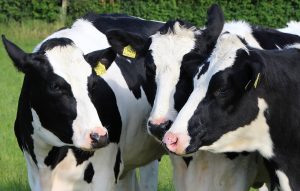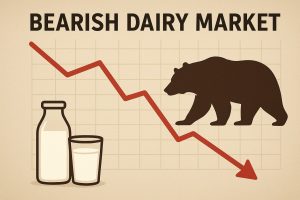
Barns were destroyed. Bins gone. Motor vehicles overturned. Cows dying and dead.
About 280 cows were pinned by debris. Rescuers needed six excavators to lift pieces of barn to free the animals. About 45 cows died.
Thankfully, no people were injured or killed.
“We worked through the night until early the next morning to try to save the animals,” said Marianne Eachus, one of the owners of Wellacrest Farms.
“As the sun was coming up the next morning, we saw the devastation. We embraced and cried. And then the thoughts came: What do we do? Where do we start?”
Soon, the Eachus family got some answers.
“There were people coming down our driveway,” she said. “People wanting to help us. I don’t know what we would have done if no one had come down our driveway that morning.”
Over the course of a year since that day, many people have donated their time and skills to restore Wellacrest Farms, home to about 600 dairy cows and 800 other animals. Farmers and other businesses donated food and supplies. People donated money.
Among those who helped were Amish from Lancaster County, Pa., about a two-hour trip from Wellacrest Farms, near Mullica Hill, south of Philadelphia.
For about eight weeks, Monday through Friday, Amish men volunteered their time and talent.
For about the first three weeks, more than 50 Amish men worked each day to help rebuild the barns and structures at Wellacrest Farms. For another five weeks, about 30 worked daily.
Christian Stoltzfus was one of the Amish who helped lead the recovery.
“As a member of Christ’s church, we are to look out for our brother, our neighbor or anyone in need,” he said. “In an Amish community, it’s ingrained in our upraising that you offer to help.”
Typically, the Amish volunteers arrived about 6:30 a.m. and worked until 3:30 p.m.
“About 9:30 each morning, they took their hats off and had quiet social time,” Eachus said. “They were of tremendous help to our family.”
Fighting for insurance funds has been difficult. The family got a crash course in depreciated value versus cash value.
A GoFundMe campaign raised about $120,000, which the family used to rebuild the heifer barn.
“We are deeply appreciative of all of the help we received from other farmers, suppliers, the Amish from the Lancaster area and just individuals who saw the devastation and wanted to help,” Eachus said.
Things are getting better.
“We’re coming along,” Eachus said. “Our cows are resilient. We have a great crop of wheat growing now. In July, we’ve had 100 babies born here on the farm. We’re still picking up trash. And we’re still dealing with the financial difficulties. But through it all, we have great employees. . . . There are so many good people out there who helped us.”
























